#solidago flexicaulis
Photo


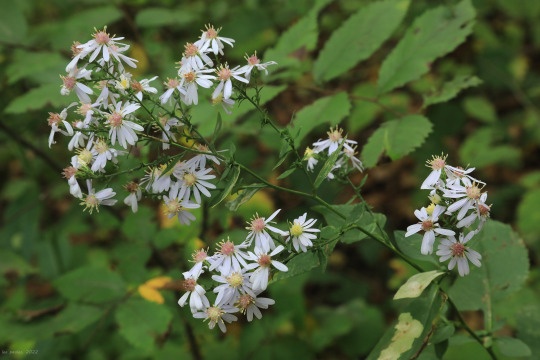
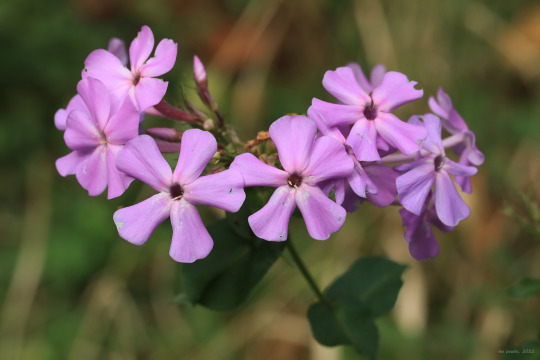
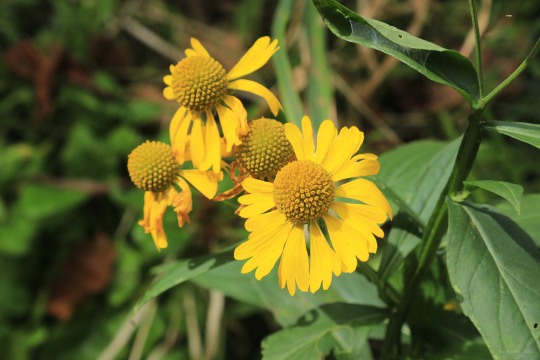



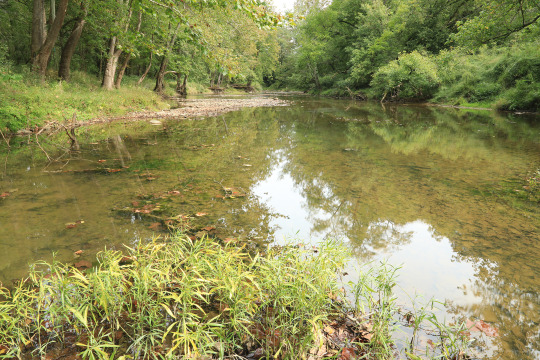
Early fall color along Dunkard Creek at the Mason-Dixon Historical Park. Most notably, broadleaved goldenrod (Solidago flexicaulis), also known as zig-zag goldenrod, is now in bloom. This is one of my favorite wildflowers of any season - it grows in gorgeous clumps with brilliant gold flower spikes and broadly-ovate, sharply serrated foliage. It’s better behaved than most goldenrods and is ideal for a bright pop of autumn color in a native wildflower garden.
From top: broadleaved goldenrod, one of two species in this area with flowers growing from the leaf axils; blue wood aster (Symphyotrichum cordifolium), a common woodland aster that blooms right up to the first frost; garden phlox (Phlox paniculata), also known as tall phlox and fall phlox, a tall, wetlands-loving perennial that blooms from July through early October in Central Appalachia; sneezeweed (Helenium autumnale), which loves the marshy edges of ponds, lakes, and streams; short’s aster (Symphyotrichum shortii), a woodland aster with a special fondness for limestone bluffs.
#appalachia#vandalia#west virginia#pennsylvania#fall#autumn#dunkard creek#mason-dixon historical park#solidago flexicaulis#broadleaved goldenrod#zig-zag goldenrod#symphyotrichum cordifolium#blue wood aster#phlox paniculata#garden phlox#tall phlox#fall phlox#helenium autumnale#common sneezeweed#symphyotrichum shortii#short's aster#wildflowers#flora
56 notes
·
View notes
Text
Goldenrods
It’s nowhere near the fall hayfever season, but I thought I’d PSA anyway.
Hayfever is caused by RAGWEED (Ambrosia artemisiifolia and Ambrosia trifida where I live).

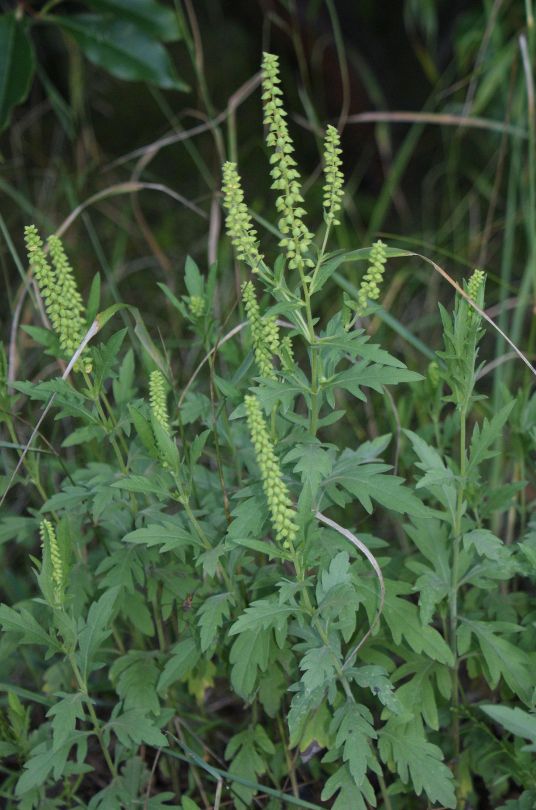
NOT. Goldenrod (Solidago, Oligoneuron, Euthamia). It is impossible for goldenrods to even cause hayfever since their pollen isn’t released to the wind. Goldenrods are beautiful, with some edible parts, some medicinal properties, and middle of summer through fall pollenators love them.
Non-exhaustive list of goldenrods
Euthamia graminifolia (Flat-top goldenrod):

Oligoneuron rigida (Stiff goldenrod):

Solidago bicolor (Silverrod):

Solidago caesia (Blue-stem goldenrod):
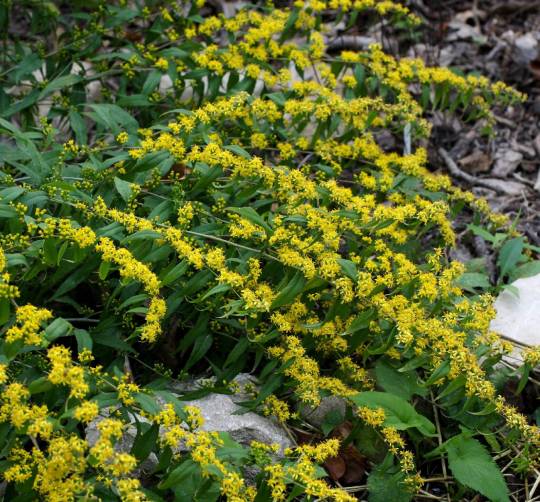
Solidago canadensis (Canada goldenrod):

Solidago flexicaulis (Zigzag goldenrod):

Solidago juncea (Early goldenrod):
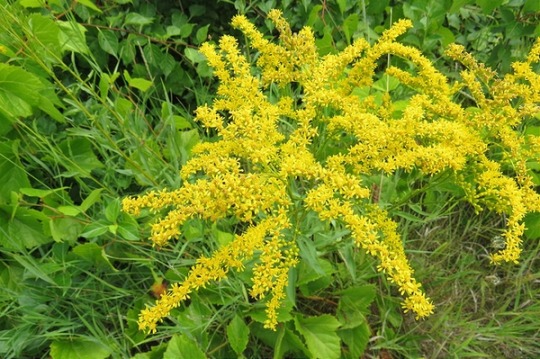
Solidago missouriensis (Prairie goldenrod):
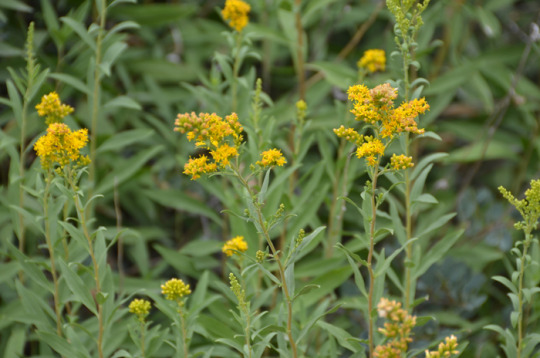
Solidago multiradiata (Alpine goldenrod):

Solidago nemoralis (Gray goldenrod):

Solidago odora (Anise-scented goldenrod):

Solidago ohiensis (Ohio goldenrod):

Solidago patula (Rough-leaf goldenrod):
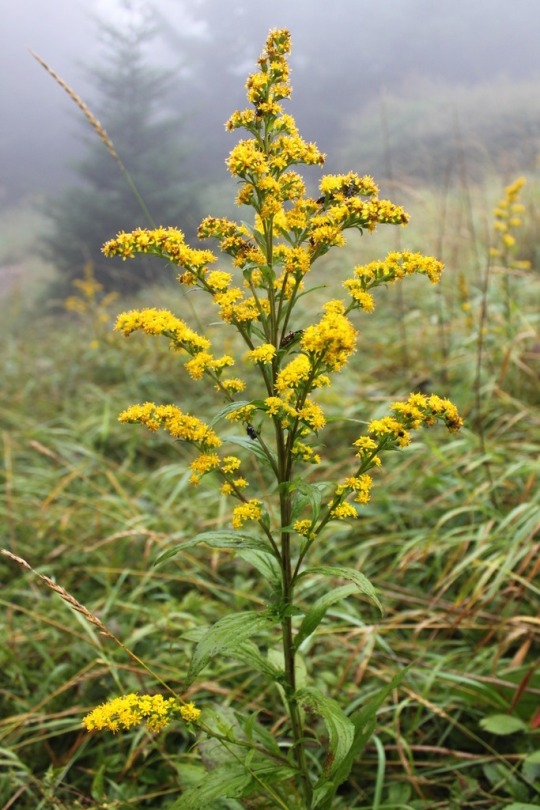
Solidago ptarmicoides (Upland white aster):

Solidago rugosa (Wrinkleleaf goldenrod):
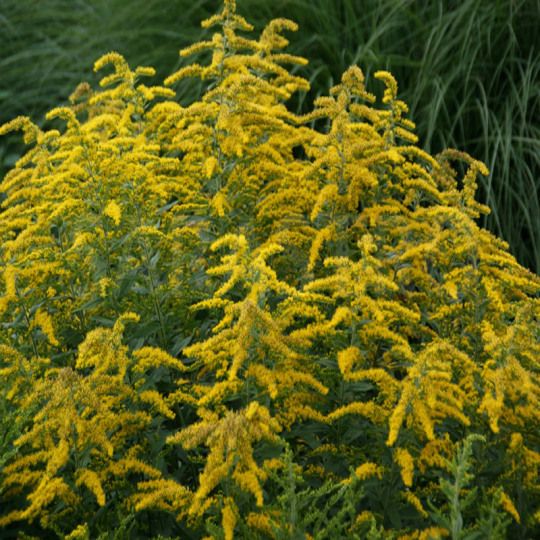
Solidago simplex (Spike goldenrod):
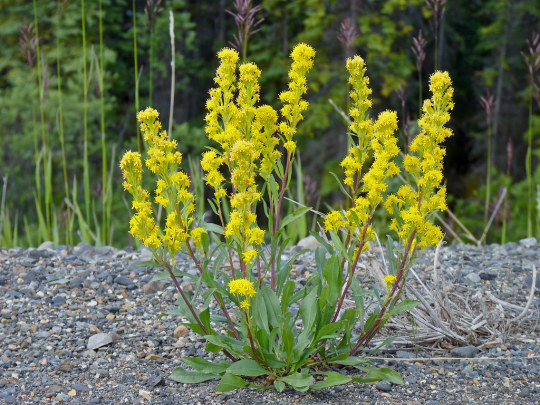
Solidago speciosa (Showy goldenrod):
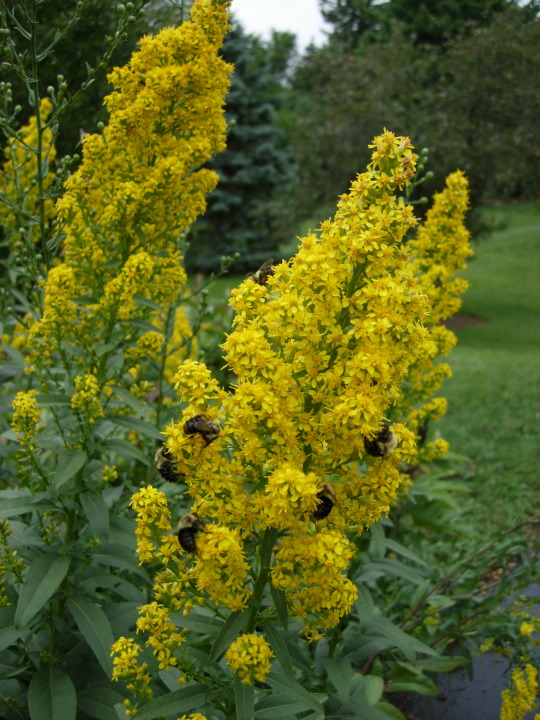
Solidago uliginosa (Bog goldenrod):
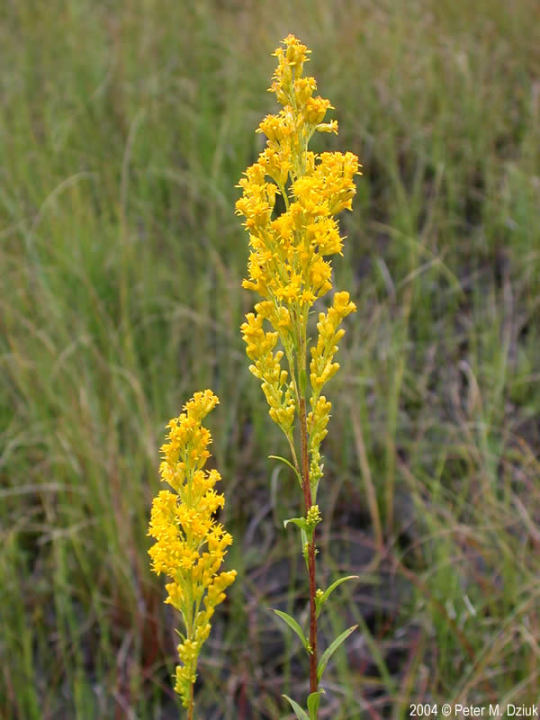
The only drawback is that many goldenrod species spread a lot and quickly if you don’t keep on top of those rhizomes. But if you need to fill a space in a relatively short period of time, why not try some in your garden? They’ll grow up green through spring and summer and put on a show in the fall (earlier depending on the species)!
#long image post#goldenrods#hayfever#ragweed#Ambrosia#Solidago#Oligoneuron#Euthamia#flowers#yellow flowers#native species of North America#North American native plants#pollinator plants
18 notes
·
View notes
Text

Instagram Repost: January 30, 2023
3 more of my seed orders came in today! Now I have so many more to add to the box 🥰 I'm so excited for this season; now I've gotta find space in the seed box for ⭲
🌿 Black Sage (Salvia Mellifera)
🌿 Purple Sage (Salvia Leucophylla)
🌿 Showy Goldenrod (Solidago Speciosa)
🌿 Zig Zag Goldenrod (Solidago Flexicaulis)
🌿 Rue (Ruta Graveolens)
🌿 Cardinal Flower (Lobelia Sardinalis)
🌿 California Mugwort (Artemisia Douglasiana)
🌿 Prairie Sage (Artemisia Ludoviciana)
🌿 Woodland Flowering Tobacco (Nicotiana Sylvestris)
🌿 Wild Bergamot (Monarda Fistulosa)
🌿 Sweet Marjoram (Origanum Majorana)
#Instagram Reposts#Personal#2023#My Garden#Garden 2023#Gardening#Verderer#Oklahoma#Green Witch#Green Witchcraft#Witchy Gardening#Witches Garden#Witch's Garden#Gardenblr#Plantblr
0 notes
Photo
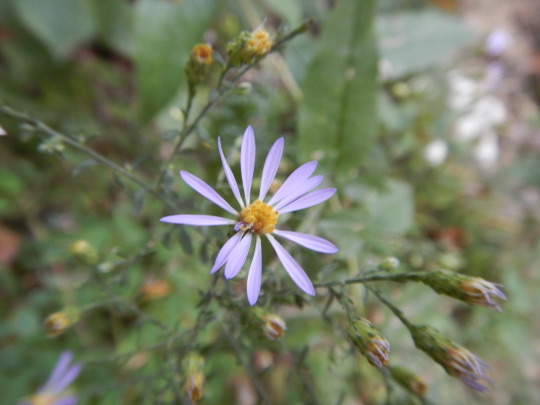



One of the many woodland Symphyotrichum spp. This one is blue flowering, occurs with cordate foliage, leaf section is not offset cordate closer to the petiole like Symphyotrichum urophyllum, and this one is also not aggressively dentate like S. cordifolium or Euribia divaricatus; the Euribia spp. is called white wood aster too, so it may help the issue with coloration of flower. Instead what we have here is Symphyotrichum drummondii, or Drummond’s blue wood aster, and upland wood aster, known for karst preference or dry oak upland forest.
Here it’s along an semi exposed dolostone area with ferrous parental top soil (iron rich clay), growing in sympatry( together) with Solidago flexicaulis (Zig Zag goldenrods), at Clifty Falls State Park, IN.
#solidago flexicaulis#solidago#in#indiana#clifty falls#wildflowers#botany#plantblr#ecology#symphyotichum#symphyotrichum drummondii
24 notes
·
View notes
Photo




I called this Woodland Goldenrod in my tweets but that’s actually the wrong common name for this species (though I was correct for its habitat preference); they’re in fact Zigzag/broadleaf goldenrod (Solidago flexicaulis).
Short stature, broad toothy leaves, and small clusters of yellow flowers, it is almost a day-and-night comparison to the field goldenrods that thrive away from the forests.
This is actually the first time I’ve seen this species in the local woodlands, but at the same time I am almost never in the woodlands in the autumn season, so that’s likely in play. Granted, I only saw 2 different clumps of it in my entire forest walk.
#my post#plantblr#gardeners of tumblr#gardeners on tumblr#BaumbachWoodlandWalk 2018#wildflowers#goldenrod#Zigzag goldenrod#broadleaf goldenrod#Solidago flexicaulis#Solidago
6 notes
·
View notes
Photo




The Best Goldenrods for Your Garden (Part II)
Groundcovers?
I bet you have never thought to put the words Goldenrod and groundcover in the same sentence, but think again. Here are three candidates for the role.
1 & 2 Solidago sphacelata ‘Golden Fleece’. This diminutive charmer is only about 1 ft tall, but provides a mound of attractive dentate heart-shaped leaves all season (image 2) until the rich and densely flowered hook-shaped wands emerge in late August through September (image 1). At least as spellbinding as the Medusa’s stare, but not the least bit lethal. I have seen it used effectively as a sunny groundcover in a roadside planting, and what a perfect way to make use of its spreading abilities in spots where other plants might struggle.
3 Solidago shortii ‘Solar Cascade’, looking similar to Fireworks, but shorter, more diffuse, and if the nurseries are to be believed, producer of a fascinating cascade of brightest yellow streamers.
4 Solidago flexicaulis ‘Zig Zag goldenrod’. Shade lovers need not feel left out in the golden groundcover department. Named for its zig-zagging flower stalks, this one is suitable for difficult to grow spots under trees (conditions in which it thrives in my neck of the woods). A definite for a naturalized effect in the woodland garden.
7 notes
·
View notes
Photo

Zigzag Goldenrod (Solidago flexicaulis)
prairienursery.com
2 notes
·
View notes
Text
Zig-Zag Goldenrod
I‘ve lived on this land almost seven years now, and I’m still discovering native plants growing wild here. This month’s find was zig-zag goldenrod (Solidago flexicaulis). Sometimes–but not always–the stem zigs and zags as it grows. (more…)
View On WordPress
1 note
·
View note
Photo

Solidago flexicaulis
http://lakesideendeavors.com/growwild/
#nature#nature photography#photography#plant#plants#garden#gardens#gardening#flower#flowers#wildflower#wildflowers#wild flower#wild flowers#growwild#growild#ebook#e-book
13 notes
·
View notes
Text

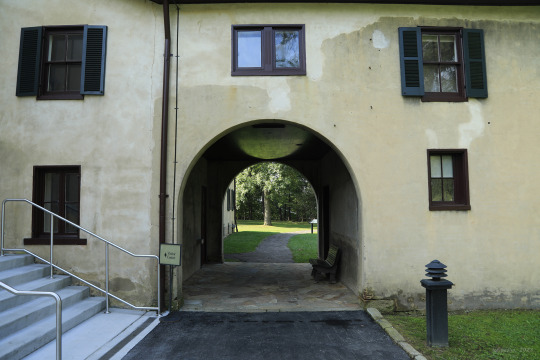
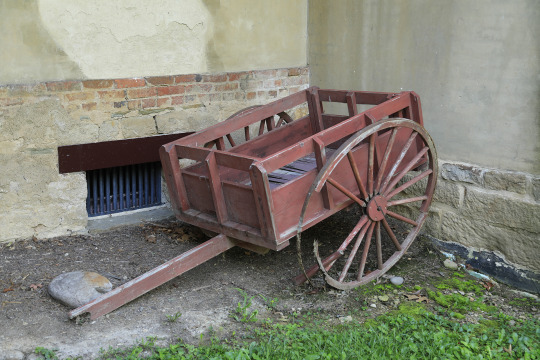


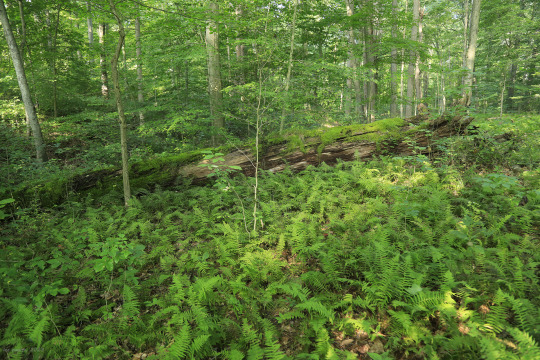

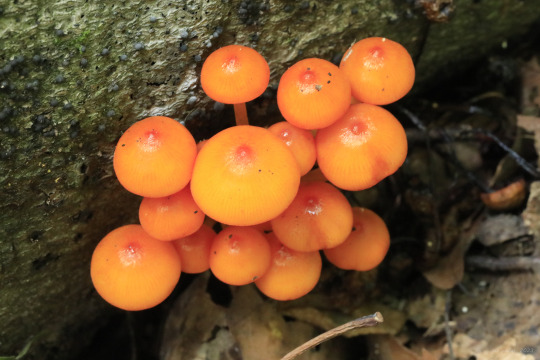
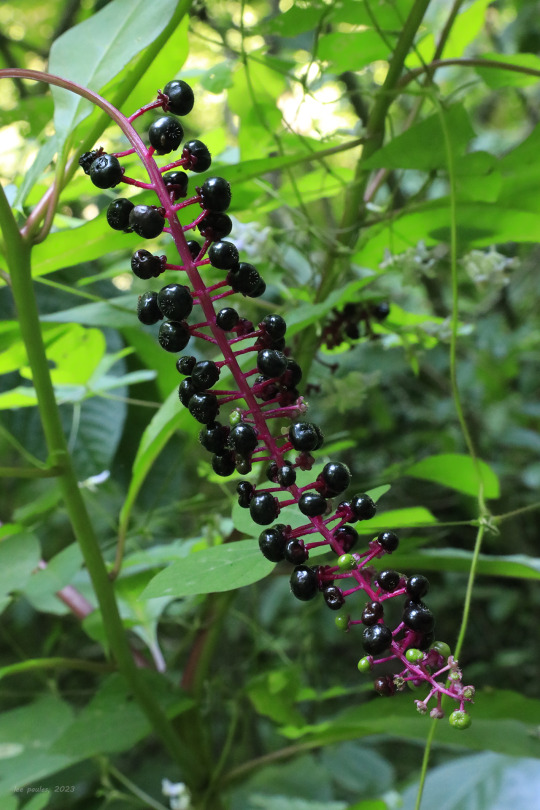
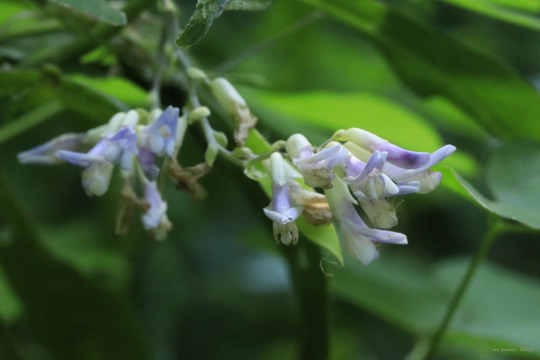

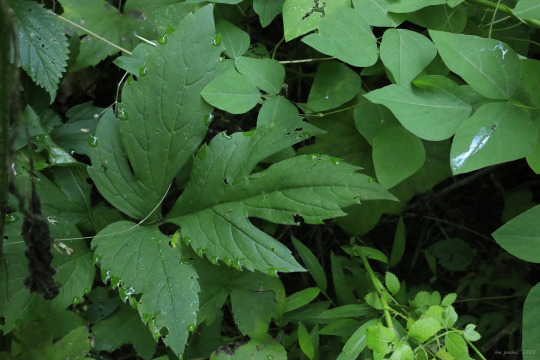
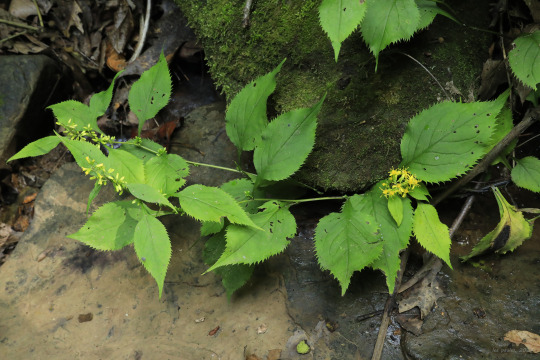
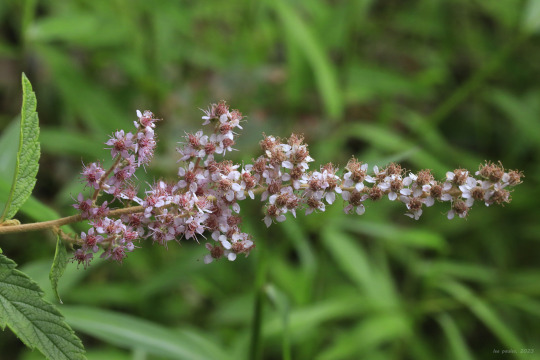
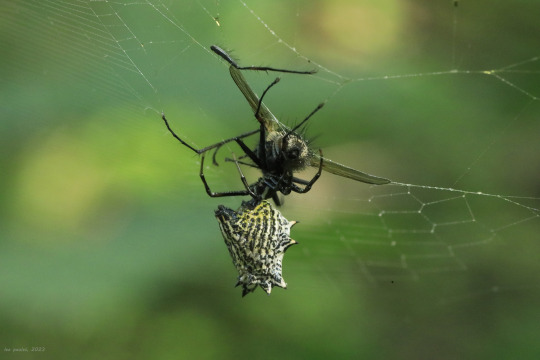

A few photos above from an early morning hike at the Friendship Hill National Historic Site near Pt. Marion, Pennsylvania. If you want to learn more about the history of this sprawling estate, you can go to this link or search for prior posts from the main search page of my Tumblr blog. In addition to the historic homestead of Albert Gallatin, the park features ten miles of hiking trails through verdant oak-hickory and riparian forests. This time of year, the Central Appalachian forest is rich with fungi, legumes, berries, and the loveliest orb-weavers imaginable.
From top: wingstem (Verbesina alternifolia), also known as yellow ironweed, a late summer aster so named because the petioles of its leaves run down the plant's stem; northern spicebush (Lindera benzoin), a gorgeous native shrub whose bright red berries in late summer are followed by the most extraordinary gold foliage in the fall; orange mycena (Mycena leaiana), a lovely, gregarious fungi of deciduous logs whose pigment has shown antibacterial and anti-cancer properties; the ripened but dangerously toxic berries of pokeweed (Phytolacca americana), whose young leaves are used by mountain folk to make poke sallet (but only after repeated cleansings to remove the toxins); American hog-peanut (Amphicarpaea bracteata), a lovely twining vine whose roots and ground nut are edible; cutleaf coneflower (Rudbeckia laciniata), also known as green-headed coneflower and wild goldenglow, a close relative of black-eyed Susan with gorgeous, pinnately-dissected leaves (the leaf photo also shows the characteristic tri-foliate leaf pattern of hog-peanut); zig-zag goldenrod (Solidago flexicaulis), one of two adorable woodland goldenrods that grow in this area (the other being blue-stemmed goldenrod), both of which produce clusters of brilliant yellow flowers in both their leaf axils and at the ends of their stems; steeplebush (Spiraea tomentosa), also known as hardhack, which produces delicate plumes of pink flowers in late summer; a spined micrathena (Micrathena gracilis), which has ensnared a fly in her web; and an arrowhead orb weaver (Verrucosa arenata), also known as a triangle orb-weaver, a sparkling gem of an arachnid that reels in its prey like a fisherman dragging in a net.
#appalachia#vandalia#wildflowers#flora#summer#arachnid#pennsylvania#friendship hill national historic site#fungi#orange mycena#wingstem#yellow ironweed#northern spicebush#pokeweed#american hog-peanut#cutleaf coneflower#green-headed coneflower#wild goldenglow#zig-zag goldenrod#steeplebush#hardhack#orb-weaver#spider#spined micrathena#arrowhead orb-weaver#triangle orb-weaver
23 notes
·
View notes
Text
I like that there are native species that just like put themselves in my garden.
Virginia creeper (Parthenocissus quinquefolia), northeastern black cherry tomato (Solanum ptychanthum), smallflower forgetmenot (Myosotis laxa), yellow wood sorrel (Oxalis stricta), white avens (Geum canadense), yellow avens (Geum aleppicum), common wood violet (Viola sororia), and fringed willowherb (Epilobium ciliatum) were already there when I moved in. Then zigzag goldenrod (Solidago flexicaulis), Canada goldenrod (Solidago canadensis), spotted St. John’s wort (Hypericum punctatum), and horseweed (Erigeron canadensis) followed. And this year I have a new one! Ternate-leaved cinquefoil (Potentilla norvegica monspeliensis).
4 notes
·
View notes
Photo
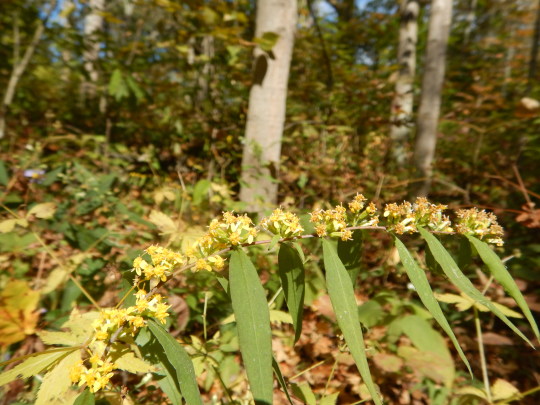



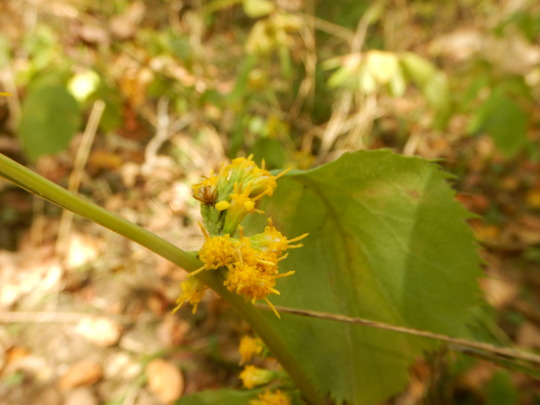


Solidago caesia (blue stem goldenrod, top) and Solidago flexicaulis( zig zag goldenrod, bottom), are both species where flower clusters appear predominantly at the petioles. They are both upper dry oak hickory woodland to open woodland species as well. Some consider these species the easiest goldenrods to ID in the United States and Canada due to their unique clustering and morphological features.
22 notes
·
View notes
Photo
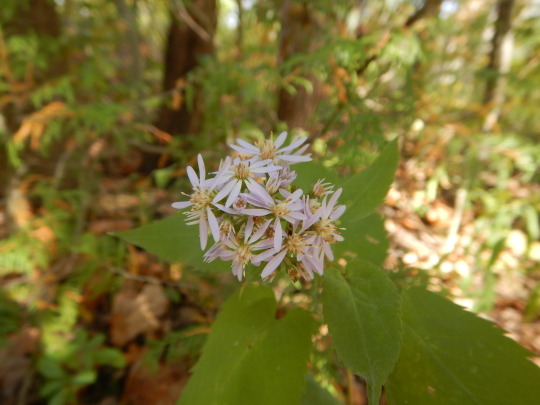


Eurybia divaricata
White Heart-leaved False Wood Aster
Growing in open white cedar( Thuja occidentalis) regrowth on shallow rich glacial and D.O.M( decayed organic material) mixed mineral soil in dappled sun at the top of Clifton Gorge, SNP, Greene co. Ohio.
Teeth are distinguishable and this species lacks a winged petiole which allows comparisons to the other wood aster found in similar habitat to be easier to juxtapose and then delineate. Though without blooms or buds it is somewhat of an issue when zig zag goldenrod( Solidago flexicaulis) is around. While both stems occur with a zig zag (aka. serpentinoid alternation or flexicaulis(zig zaging flexible stem)), zig zag goldenrod’s leaves are the best way to rule this issue. S. flexicaulis leaves are truly obovate with leaves not truly forming cordate(heart shaped) termination before the petiole(Where the leaf blade attaches to the stem at a node); instead, zig zag only appears this way since there is an abrupt reflex( base of leaf somewhat reflexed just prior to the petiole).
#eurybia divaricata#eurybia#wildflowers#ohio#botany#plantblr#asters#asteraceae#forrestcore#solidago#solidago flexicaulis
21 notes
·
View notes
Photo

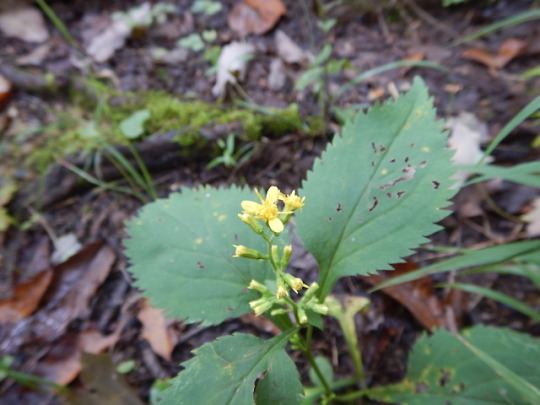
Zig Zag Goldenrod
Solidago flexicaulis,
This species is fairly easy to identify, mainly because of the zig zagging stem pattern, the openwoodland to edge mesic habitat, the large serrate leaves, and the lower inflorescences being commonly associated with each leaves adaxial node near the top of the plant.
Unfortunately this plant had been broused recently which doesn’t give a perfect example of the associated characteristics; with that said, it does make a good example of a damaged zig zag goldenrod. >:)
3 notes
·
View notes